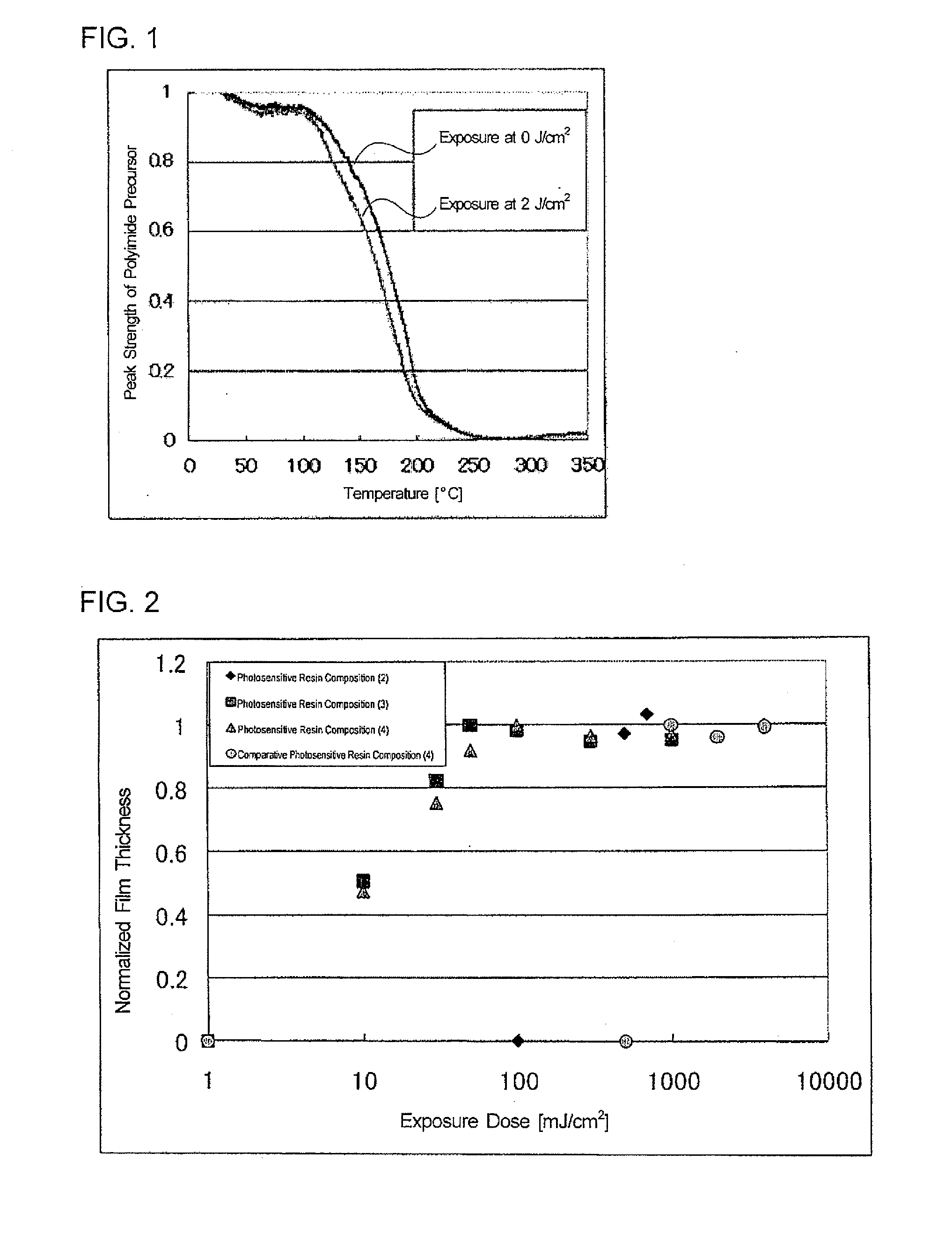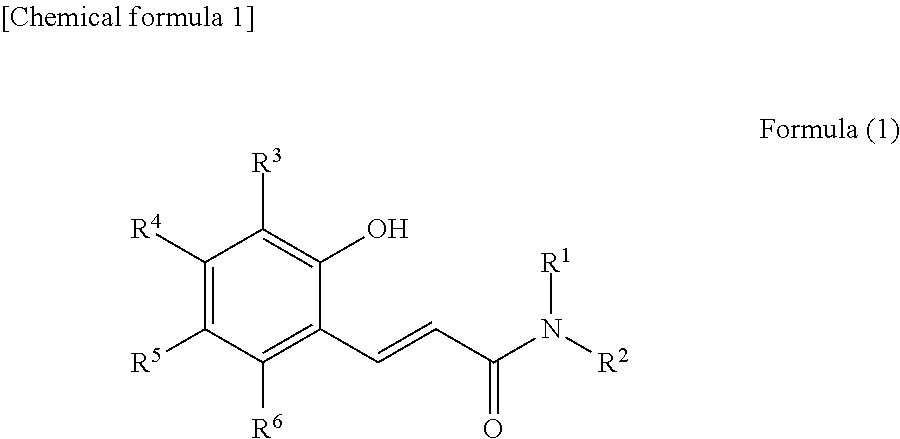Base generator, photosensitive resin composition, pattern forming material comprising the photosensitive resin composition, and pattern forming method and article using the photosensitive resin composition
a technology of resin composition and base generator, which is applied in the direction of photosensitive materials, other chemical processes, instruments, etc., can solve the problems of poor solubility of polyimide in solvents, difficult processing, and inability to obtain polyimide's characteristic properties, etc., to achieve greater sensitivity, increase the difference between solubility, and the effect of increasing the sensitivity
- Summary
- Abstract
- Description
- Claims
- Application Information
AI Technical Summary
Benefits of technology
Problems solved by technology
Method used
Image
Examples
synthesis example 1
Synthesis of Polyimide Precursor
[0236]Di(4-aminophenyl)ether of 10.0 g (50 mmol) was poured into a 300 mL three-neck flask, dissolved in 105.4 mL of dehydrated N,N-dimethylacetamide (DMAc) and stirred while cooling in an ice bath under a nitrogen flow. 3,3′,4,4′-Biphenyltetracarboxylic acid-3, 4:3′,4′-dianhydride of 14.7 g (50 mmol) was gradually added thereto and stirred in an ice bath for five hours after the addition. The resulting solution was reprecipitated with dehydrated diethyl ether and the resulting precipitate was dried for 17 hours at a room temperature under a reduced pressure, thereby obtaining a polyamic acid having a weight average molecular weight of 10,000 (polyimide precursor (1)) quantitatively in the form of a white solid.
synthesis example 2
Synthesis of Polysiloxane Precursor
[0237]Into a 100 ml flask provided with a condenser tube, phenyltriethoxysilane of 5 g, triethoxysilane of 10 g, ammonia water of 0.05 g, water of 5 ml and propylene glycol monomethyl ether acetate of 50 ml were poured. The resulting solution was stirred with a semicircular-type mechanical stirrer and reacted with a heating mantle for six hours at 70° C. Then, ethanol produced by a condensation reaction with water, and residual water were removed with an evaporator. After the reaction was completed, the flask was left to reach room temperature, thereby producing a condensate of alkoxysilane (alkoxysilane condensate (1)).
production example 1
Synthesis of Base Generator (1)
[0238]In a 300 mL three-neck flask under a nitrogen atmosphere, o-coumaric acid (manufactured by Tokyo Chemical Industry Co., Ltd.) of 1.00 g (6.1 mmol) was dissolved in dehydrated tetrahydrofuran of 100 mL, and 1-ethyl-3-(3-dimethylaminopropyl) carbodiimide hydrochloride
[0239](manufactured by Tokyo Chemical Industry Co., Ltd.) of 1.17 g (6.1 mmol, 1.0 eq) was added thereto. Cyclohexylamine
[0240](manufactured by Kanto Chemical Co., Inc.) of 0.7 ml (6.1 mmol, 1.0 eq) was added thereto in an ice bath, and then the mixture was stirred at room temperature for three days.
[0241]The resulting reaction solution was washed with a saline solution and dried with sodium sulfate. The resultant was purified by silica-gel column chromatography (developing solvent: chloroform / methanol=1 / 0 to 20 / 1), thereby obtaining base generator (1) represented by the following chemical formula (6) of 350 mg.
PUM
| Property | Measurement | Unit |
|---|---|---|
| boiling point | aaaaa | aaaaa |
| boiling point | aaaaa | aaaaa |
| temperature | aaaaa | aaaaa |
Abstract
Description
Claims
Application Information
 Login to View More
Login to View More - R&D
- Intellectual Property
- Life Sciences
- Materials
- Tech Scout
- Unparalleled Data Quality
- Higher Quality Content
- 60% Fewer Hallucinations
Browse by: Latest US Patents, China's latest patents, Technical Efficacy Thesaurus, Application Domain, Technology Topic, Popular Technical Reports.
© 2025 PatSnap. All rights reserved.Legal|Privacy policy|Modern Slavery Act Transparency Statement|Sitemap|About US| Contact US: help@patsnap.com



